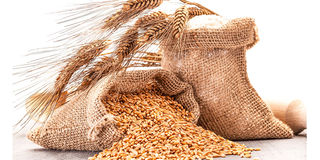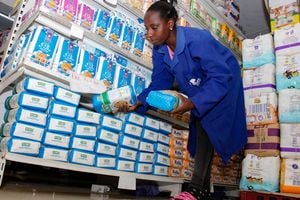
The government has raised the minimum price that millers pay for top-grade wheat picked from farmers by Sh100 per bag, a new pricing schedule shows, handing growers a boost in the new crop season.
The government has raised the minimum price that millers pay for top-grade wheat picked from farmers by Sh100 per bag, a new pricing schedule shows, handing growers a boost in the new crop season.
Wheat traded in Kenya is classified into three categories; Grade 1, 2, and 3 based on the bushels, which is the weight of crop yield per acre at harvest.
A circular by the Agriculture and Food Authority (AFA) showed that the minimum price of a 90-kilogramme bag of Grade 1 wheat will go for Sh5,300 in the 2024/25 harvest season, marking a two percent increase from the Sh5,200 set for the ended 2023/24 season.
In the new schedule, millers are required to purchase a 90kg bag of Grade 2 wheat from farmers at a minimum price of Sh5,200, which is an increase from the Sh5,100 set for the previous 2023/24 season.
Meanwhile, just like during last season, millers and farmers have been allowed to negotiate the price of Grade 3 wheat on a willing buyer–willing seller basis.
“This pricing shall apply as at traditional buying centres of Narok, Nakuru, Eldoret, Nyahururu, and Timau,” said AFA.
The pricing is part of the State-backed Wheat Purchase Programme(WPP) that was introduced by the National Treasury in 2010.
Under the programme, local millers gazetted by the East Africa Community (EAC) pay 10 percent import duty instead of 35 percent subjected to sensitive products under the Common External Tariff (CET) of the EAC.
This is however on condition that local participating millers mop up locally produced wheat based on agreed quotas to support production.
Wheat is Kenya’s second-largest-grown cereal crop after maize. It is mainly grown in five counties namely Narok, Uasin Gishu, Nakuru, Laikipia, and Meru.
Wheat products are some of the most consumed food commodities in Kenya. The average wheat consumption in the country is about 18 million bags per year.
However, while demand for wheat has been increasing in recent decades, production of the cereal has been in a general state of decline.
Wheat production decreased by 16.1 percent from 368,700 tonnes in 2022 to 309,500 tonnes in 2023 as farmers opted to cultivate maize farming, according to the Economic Survey 2024.
On the other hand, the quantity of imported wheat rose by 21.5 percent to 2.03 million tonnes in 2023.
“This increase in wheat imports is largely attributable to the decreased local wheat production during the period under review,” said the Survey.
Russia is the primary supplier of wheat to Kenya. It is followed by Argentina, Germany, Poland and Canada respectively.







